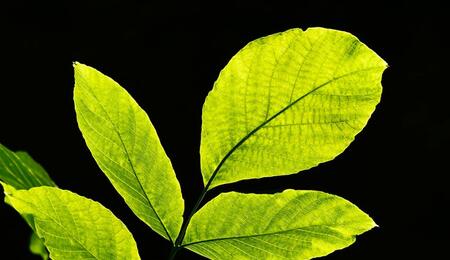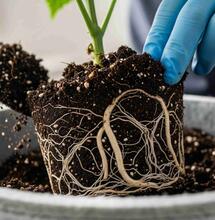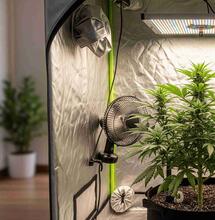Photosynthesis Basics

Photosynthesis is the process used by plants to convert energy, water and carbon dioxide into carbohydrates and oxygen for plant growth. When the green chlorophyll degrades, underlying pigments can show through.
Photosynthesis Allows Plants to Convert Light Energy Into Plant Mass
Light strikes the leaf cell structures called chloroplasts, which contain green chlorophyll pigments. These pigments appear green because, while they absorb (and make use of) red and violet-blue light, they reflect green light. It is this reflected green light that gives plants their green appearance. Autumnal colors appear when the green pigments degrade and the underlying pigments can show through. The chlorophyll pigment itself is comprised of carbon, nitrogen and magnesium - and is where most of the plant's need for magnesium originates.
Light is captured and combined with water (H20) and phosphorous (P) to create adenosine triphosphate (ATP) often called 'a molecular unit of currency', and nicotinamide adenine dinucleotide phosphate (NADPH or NADP+). This process partially explains why plants require phosphorus as a nutrient. Oxygen gas (O2) is also released, venting off though holes in the leaf structure, known as 'stomatas' (sing. 'stomate').
For the first stage of the process, an increase of available light generally improves performance - up to a maximum. This is the primary reason that light is required for plant growth, and why stronger light tends to grow larger plants. NADPH and ATP store collected light energy; once the two compounds are created, any reactions that follow use them as an energy source and do not benefit directly from light intensity - although the whole process only takes about a second, so photosynthesis can be treated as light-dependent in most cases.
In the Calvin-Benson cycle, carbon dioxide (CO2) from the air is brought in through the leaf stomatas - the same ones used for venting oxygen - and is incorporated with ribulose bisphosphate (RuBP) in a process known as 'carbon fixation'. The enzyme involved is known as RuBisCO, and accounts for about a quarter of the nitrogen content in Cannabis leaves. Using the ATP and NADPH produced by the previous reactions, the resulting compounds are then reduced to form carbohydrates, such as glucose. These carbohydrates are then used for plant growth. While the amount of available light for this reaction is NOT a factor in this second stage, the amount of heat energy (temperature) and the amount of available carbon dioxide ARE factors.
Since light is required for the first stage, and both temperature and carbon dioxide are required for the second stage, it behooves gardeners to ensure that sufficient quantities of all three resources are available to the plant. If we simplify the reactions above, we can account for the inputs and outputs as 6H2O + 6CO2 → C6H12O6 + 6O2 (six water and six carbon dioxide forming one sugar and six oxygen).
To maximize carbohydrate production in plants, they must have sufficient access to the needed resources. By ensuring the availability of adequate - but not excessive - light, heat, water and carbon dioxide, a healthy plant can make the most of its chlorophyll pigments and create the sugars needed for plant development.
As a final note, adding carbohydrates directly to a nutrient solution does not increase the amount of sugars available to the plant for growth. Carbohydrates added in this fashion are used by the fungal colonies in the root system in exchange for improved access to nutrients, such as phosphorus.
Peace, love and puka shells,
Grubbycup



